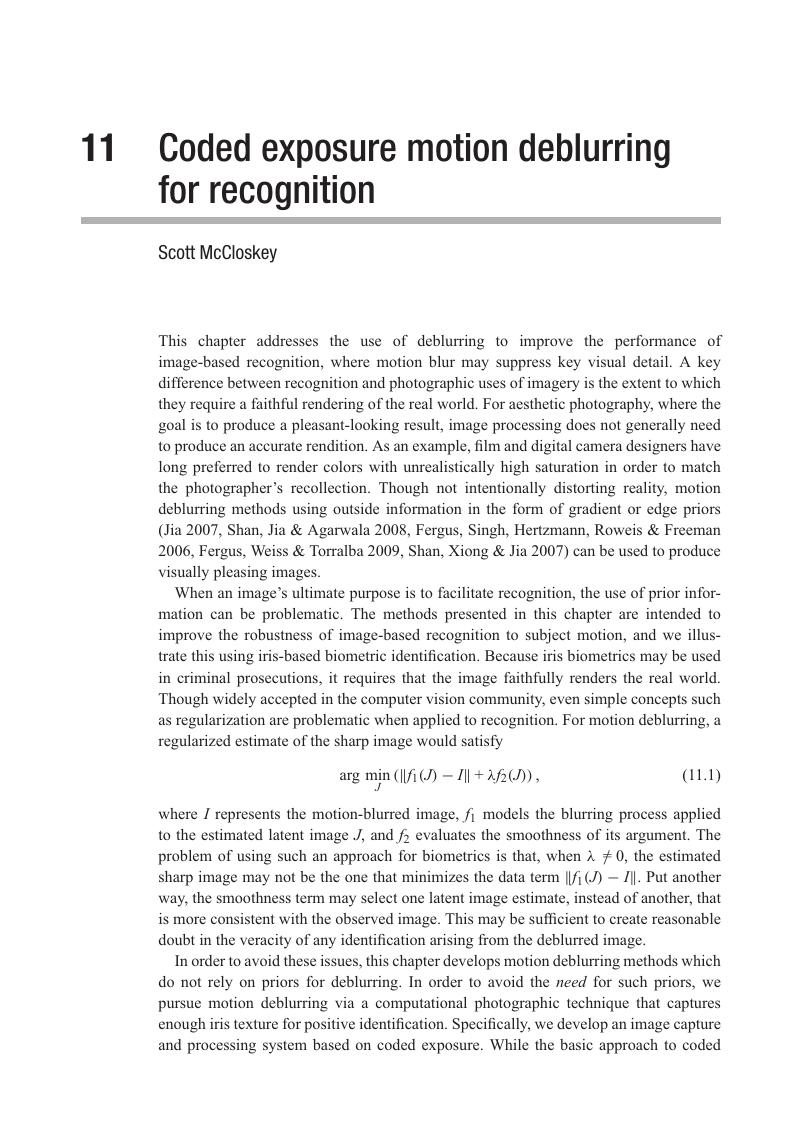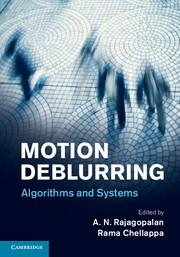Book contents
- Frontmatter
- Contents
- List of contributors
- Preface
- 1 Mathematical models and practical solvers for uniform motion deblurring
- 2 Spatially-varying image deblurring
- 3 Hybrid-imaging for motion deblurring
- 4 Efficient, blind, spatially-variant deblurring for shaken images
- 5 Removing camera shake in smartphones without hardware stabilization
- 6 Multi-sensor fusion for motion deblurring
- 7 Motion deblurring using fluttered shutter
- 8 Richardson–Lucy deblurring for scenes under a projective motion path
- 9 HDR imaging in the presence of motion blur
- 10 Compressive video sensing to tackle motion blur
- 11 Coded exposure motion deblurring for recognition
- 12 Direct recognition of motion-blurred faces
- 13 Performance limits for motion deblurring cameras
- Index
- References
11 - Coded exposure motion deblurring for recognition
Published online by Cambridge University Press: 05 June 2014
- Frontmatter
- Contents
- List of contributors
- Preface
- 1 Mathematical models and practical solvers for uniform motion deblurring
- 2 Spatially-varying image deblurring
- 3 Hybrid-imaging for motion deblurring
- 4 Efficient, blind, spatially-variant deblurring for shaken images
- 5 Removing camera shake in smartphones without hardware stabilization
- 6 Multi-sensor fusion for motion deblurring
- 7 Motion deblurring using fluttered shutter
- 8 Richardson–Lucy deblurring for scenes under a projective motion path
- 9 HDR imaging in the presence of motion blur
- 10 Compressive video sensing to tackle motion blur
- 11 Coded exposure motion deblurring for recognition
- 12 Direct recognition of motion-blurred faces
- 13 Performance limits for motion deblurring cameras
- Index
- References
Summary

- Type
- Chapter
- Information
- Motion DeblurringAlgorithms and Systems, pp. 222 - 245Publisher: Cambridge University PressPrint publication year: 2014
References
- 1
- Cited by



